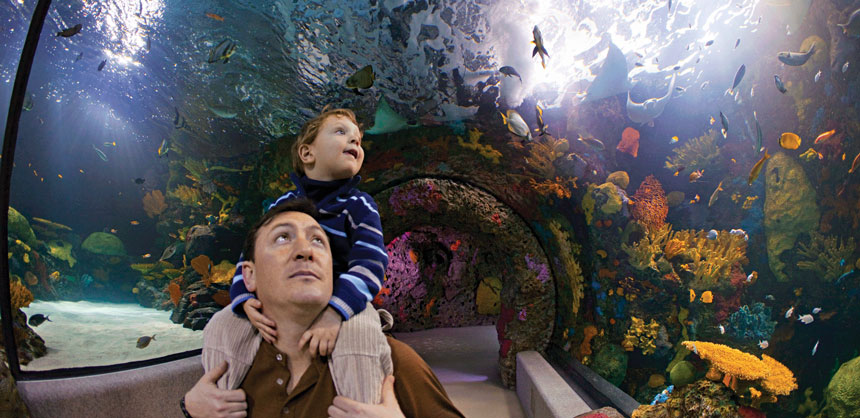SMERF MeetingsAugust 1, 2013
Hooked on Being the Big Fish in a Small Pond By Derek ReveronSMERF Meetings
Hooked on Being the Big Fish in a Small Pond
Attendees who meet in Virginia Beach marvel at the amazing exhibits and 800,000-gallon aquarium at Virginia Aquarium & Marine Science Center. Credit: Virginia Aquarium & Marine Science Center
Social, military, education, religious and fraternal (SMERF) meetings are all but unstoppable these days. While the SMERF segment isn’t the largest, it is dependable, and continues to meet during the good times and the bad economic times with little attendee falloff. SMERF groups most often have loyal attendees who fill hotel vacancies by meeting on weekends and during off-peak times and shoulder seasons, says Sara Torrence, CMP, president of Torrence and Associates in Gaithersburg, MD, and a member of the Conference and Visitors Bureau of Montgomery County Maryland (CVBMCM). “If hotels and destinations want group business during those periods, they should look at SMERFs. Hotels don’t have lots of group business over the weekends, and many corporations don’t meet then. But many social, religious and fraternal organizations have to meet over weekends. They are very dependable in that regard,” says Torrence.
While SMERFs are reliable, they tend to be mostly small groups with tight budgets and attendees who pay all or most of their meeting expenses. In part, that’s why planners of SMERF meetings tend to favor less expensive second- and third-tier destinations such as Virginia Beach, VA; Wilmington, NC; Louisville, KY; Springfield, MA; Oklahoma City, OK and Fort Myers, FL.
Many of these destinations, according to their CVBs, actively court SMERF groups. Still, SMERFs must work a little harder to obtain bargains due to the strengthening seller’s market.








